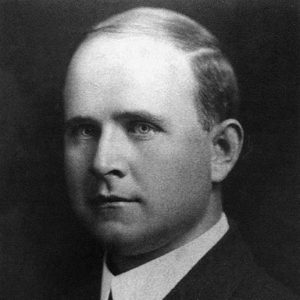calsfoundation@cals.org
Earle William Hodges (1881-1941)
At the time of his election in 1910, Earl W. Hodges was the youngest secretary of state in the history of Arkansas. A longtime newspaperman and public servant, he went on to be elected twice more. It was the only elected office he held.
Earl William Hodges was born in a log cabin at Newark (Independence County) on September 27, 1881, to Jesse Beane Hodges and Teresa J. Humphrey Hodges. When he was about two years old, the family moved to Fulton County in northern Arkansas. He was educated in Salem (Fulton County) schools. While there, he learned the trade of newspaper typesetting and soon became the foreman of the Monitor of Mammoth Spring (Fulton County). He eventually purchased a newspaper in Imboden (Lawrence County) and later worked for papers at Batesville (Independence County). In 1900, he moved to St. Louis, Missouri, working as a reporter for the St. Louis Post-Dispatch and also the Star. A short time later, back in Arkansas, he became a partner in the Pocahontas News-Herald and Edition. In 1906, he became the secretary of the Arkansas Press Association. He held the position for twelve years.
He married Nell Gamel on March 3, 1901, in Hoxie (Lawrence County). She became an assistant in his newspaper career. They had a son.
Hodges began his public service career in 1904 when he was appointed as the Arkansas state printing clerk. He held that position for about six years. Later, he was appointed deputy state auditor.
In 1910, Hodges won the first of three terms as secretary of state. At age twenty-eight, he was the youngest to hold the office at that time. He did not seek reelection in 1916 but instead ran in the Democratic primary for the office of governor. He was defeated by incumbent governor Charles Brough. Hodges would not seek another elective office.
Hodges held many positions during his lifetime. He was president of the Little Rock Building Investment Company and the International Association of Lions Clubs. As the president of the State Historical Museum Association, he was a strong advocate of the preservation of the building now known as the Old State House. He provided money for upkeep of the building and borrowed more to pay for a watchman for the building. When the building was vacated, he solicited tenants for the structure to prevent it from sitting empty. During World War I, he served as a member of the Exemption Board No. 2 in Little Rock (Pulaski County). In 1919, he was in charge of raising money for the Fund for American Jewish Relief Committee. For three years, beginning in 1920, he served as the regional director of the western states for Jewish Relief in the Far East. He had moved to San Francisco, California, in 1921 to complete this relief work. He returned to Arkansas in 1922, assuming the office of publicity director for the Public Utility Association of Arkansas. Hodges also served as director of the Arkansas Utility Bureau for three years. During Governor Thomas McRae’s term in office, he was a member of the State Capitol Beautification Committee.
In 1925, he moved to New York, where he became the public relations counsel manager for the Henry L. Doherty Company, a utilities investment firm. From 1930 to 1931, he served as an executive officer of the Cities Services Corporation of New York.
He died suddenly at his Firestone, New York, home of a heart attack on October 14, 1941. He is buried in New York.
For additional information:
Allsopp, Fred W. History of the Arkansas Press for a Hundred Years and More. Little Rock: Parke-Harper Pub. Co., 1922.
“Earl W. Hodges Dies in New York.” Arkansas Gazette, October 15, 1941, p. 20.
Hempstead, Fay. Historical Review of Arkansas, Vol. 2. Chicago: The Lewis Publishing Company, 1911.
Kwas, Mary L. A Pictorial History of Arkansas’s Old State House: Celebrating 175 Years. Fayetteville: University of Arkansas Press, 2011.
Debra Polston
Cabot, Arkansas
 Early Twentieth Century, 1901 through 1940
Early Twentieth Century, 1901 through 1940 Historic Preservation
Historic Preservation Politics and Government
Politics and Government Earle Hodges
Earle Hodges 




Comments
No comments on this entry yet.